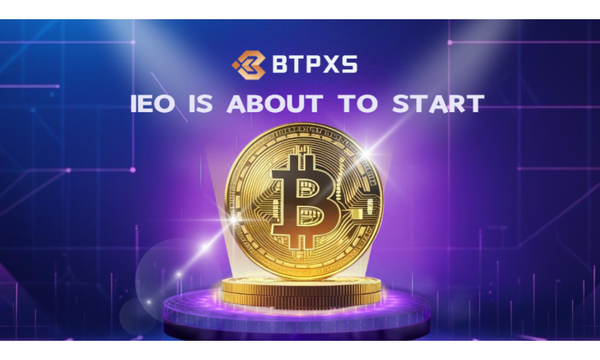Running a Light Client Like Geth and Connecting to the Ethereum Network
Welcome to the world of Ethereum! Running your own light client like Geth is an excellent way to participate in the Ethereum network while maintaining security and privacy. In this article, we'll explore what exactly a light client is, the benefits of running Geth, and give a step-by-step guide to get you connected to the Ethereum blockchain.
What is a Light Client?
A light client like Geth provides access to the Ethereum network without needing to download the full blockchain. Instead, it uses a protocol called Light Ethereum Subprotocol (LES) to connect to full nodes on the network that serve the data needed. The main benefit of a light client is you don't need significant bandwidth or storage to interact with Ethereum. You only download block headers and connect out to full nodes for any information needed.
Some key advantages of using a light client:
- Less storage needed - Only block headers are stored locally. The current Geth chaindata is around 5GB vs. 300GB for a full node.
- Faster sync times - Syncing up a light client can take just minutes or hours vs days for a full node sync.
- Lower bandwidth requirements - You only use bandwidth when actively querying data from full nodes.
- Improved privacy - You aren't advertising your full transaction history to the network.
If you want secure access to Ethereum but don't have resources to run a full node, a light client is a great option. Let's look at running Geth, the most popular light client.
Running Geth Light Client
Geth is an implementation of an Ethereum node originally developed by the Ethereum Foundation. It can run in light client mode which significantly reduces storage and bandwidth requirements. Here are the steps to get Geth up and running as a light client:
1. Install Geth
You'll first need to install Geth on your computer if you don't already have it. Packaged installers for Windows, Mac, and Linux can be found on the official Geth downloads page. Make sure to pick the latest release.
2. Initialize Data Directory
Choose an empty directory on your computer where Geth can store the block headers and other data. Initialize it by opening a terminal and running:
Copy codegeth --datadir /your/chosen/directory init
This will create the data directory with default genesis block.
3. Run Geth in Light Client Mode
To start syncing the headers, run:
Copy codegeth --datadir /your/data/dir --syncmode light
The --syncmode flag tells Geth to run as a light client.
Geth will now start downloading the block headers from full nodes and sync up the Ethereum blockchain state. Progress will be reported as it goes. Initial sync may take 10-60 mins depending on your connection speed.
Once fully synced up, you now have a fully functional light client! The client will continue staying up to date in the background.
Interacting with Your Light Client
Now that your light client is synced with the latest blockchain state, here are some ways you can interact with it:
- Send transactions - Use the Geth console or attach with code to broadcast signed transactions to the network.
- Call contracts - Read Ethereum contract data by calling public functions.
- Develop applications - Build Ethereum apps with web3.js or other development frameworks.
- Host APIs - Provide third parties access to the Ethereum network via JSON-RPC endpoints.
- Validate payments - Check if transactions sent to you are confirmed on the blockchain.
- Run validator node - If you want, Geth's light client can be configured to stake on the Beacon Chain.
Light clients open up fast, secure access to many of Ethereum's core capabilities without the resource overhead of running a full node. They enable you to hold and transfer ETH, use Dapps, read blockchain data, and more.
As the famous Ethereum developer Vitalik Buterin once said:
"I view Ethereum as a decentralized platform that runs applications exactly as programmed without any possibility of downtime, censorship, fraud or third party interference."
This really highlights the resilience and autonomy that running your own light client provides. You are participating in the Ethereum network directly, while avoiding the burdens of a full node.
Should You Use a Light Client or Full Node?
Deciding whether to run a light client or a full Ethereum node comes down to your specific needs and resource constraints. Here's a quick comparison:
Light Client
- Less storage and bandwidth required
- Faster sync times
- Good for end users wanting to access the network
Full Node
- Provides maximum security by validating all transactions
- Supports the network with higher uptime
- Needed for intensive services like exchanges or mining pools
In summary:
- For personal usage, light clients like Geth provide excellent security and ease of use.
- For power users and businesses, running your own full node may be worth the extra resources.
Conclusion
I hope this guide has demystified light clients and given you the tools to start running your own instance of Geth. Some parting tips:
- Consider connecting to multiple light peers for improved redundancy.
- Setup backups of your chaindata directory to avoid starting syncs from scratch.
- Review the documentation to properly secure your node and manage exposure.
Light clients open up the possibilities of Ethereum in a simple and sustainable way. With just a bit of storage and bandwidth, you can participate in the future of finance, hold assets digitally, and build cutting edge applications. Welcome to the next generation of the internet!
Check our guide of the most promising crypto




